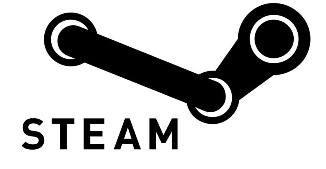Steam – the gaming platform before there were platforms

Almost 15 years later, Valve's Steam PC gaming platform continues to dominate
The video games (or gaming, more generally), market reach $100 billion in 2016 and is forecast to grow to almost $120 billion by 2019. This makes gaming the largest and fastest growing segment of the entertainment industry. The three major platforms on which people game are PC, console and mobile, each about equal in size (though mobile is by far the fastest growing). However, while console and mobile gaming platforms are dominated by players like Microsoft’s Xbox, Sony’s PlayStation, Nintendo, Google and Apple, the flexibility and openness of PC hardware has led to a relatively fragmented gaming ecosystem.
That being said, many PC gaming companies have launched platforms in an attempt to capture eyeballs and market share. Of these, Valve’s Steam is by far the most successful and beloved platforms with over 125 million registered users. Steam is a digital games distribution platform which gives consumers centralized multiplayer gaming and social networking, and gives developers digital rights management and seamless publishing and distribution. It is estimated that in 2015, 15% of global PC gaming transactions went through Steam. Its competitors include Activision Blizzard’s BattleNet and Electronic Art’s Origin.
There are a number of reasons that Steam has been able to become so successful. Firstly, Valve had critical IP (its own catalogue of games) that it was able to use to attract a large initial user base. Steam was launched in 2003 to support the viral growth on Counter-Strike (CS), the most successful first person shooter game of all time (even today). With over 50 million copies sold to date, at the time CS, though growing rapidly, was plagued by cheating and piracy, and its player base was fragmented across multiple versions. Leveraging its ownership of the underlying IP, Valve was able to funnel all players through the Steam platform and solve all of these pain points.
Secondly, though Steam started out by offering only Valve games, Valve recognized that the degree of fragmentation of game developers, prohibitively high costs of physically publishing and distributing games, increasing challenge of digital rights management and rise of digital content distribution created an opportunity. In 2005, Valve opened the Steam platform to allow non-Valve games to be sold and played through Steam. In doing so it became a two-side marketplace for game developers (large and small) and players, and leveraged the enormous network effects to grow its market share. In fact, Steam has become so successful that even major competitors like Microsoft are selling their games through it. Meanwhile, Steam’s PC platform competitors continue to relying on their own exclusive titles and remain closed.
Finally, knowing that it was relatively easy and common for players to “multihome” between games and platforms, Steam was designed to promote user adoption and stickiness. Steam was (and continues to be) free to download and much of the base game content is either free or relatively low cost (Steam is also known for regularly offering attractive discounts and sales). In fact, much of the revenue is generated from in game “microtransactions”. For example, DOTA 2, currently the most popular e-sports game in the world and exclusive to Steam, is free-to-play and generated $238 million in virtual games revenue in 2015. Steam also created community ecosystem around its platform and various games, including forums, achievement systems and leaderboards, which were critical differentiating factors.
The combination of these elements, combined with the fact that Valve had both the first mover advantage and the foresight to see the value in a unified PC gaming platform, has been the foundation of its success.



Great article, thanks!
Two thoughts:
1. It’s interesting to think of Steam Greenlight (community voting for new games) as a way to create Network Effects / virality and increase the value of the platform.
2. Can Steam’s platform be leveraged to the business world? (I’m thinking Slack/gamification of the work environment with easy installations, external update pushes and rankings)
Thanks for the comment! Interesting thought about leveraging Steam in the business world. While I do think there is a lot of potential for gamification to make workplaces more fun and engaging, I’m not sure that Steam is the right platform for it, just because it is so entertainment/gaming centric.
Interesting how gaming is the fastest growing entertainment industry segment. Do you foresee a future of more interactive entertainment? For example a combination of movies and video games similar to choose your own adventure books?
I definitely do think that, with the advent of VR and AR, there will be an increasing push into interactive entertainment. Many gaming companies are already starting to blend the borders between gaming, movies/TV, music. Blizzard for example as extremely strong lore and IP, which has enabled them to sell merchandise, books/comics, figurines and most recently a movie. Blizzard’s latest blockbuster, Overwatch, was also clearly, at least in my opinion, designed with the intention of expanding into TV/movies. Square Enix is also very good at this its Final Fantasy franchise.